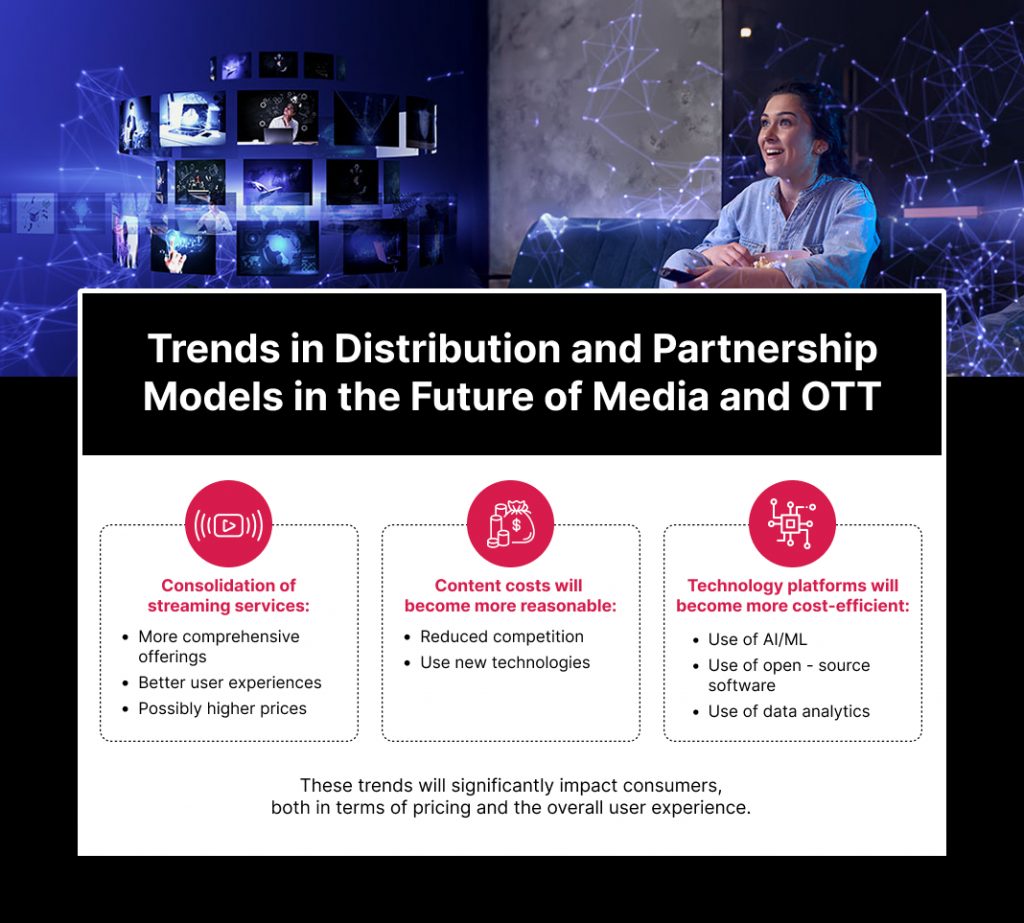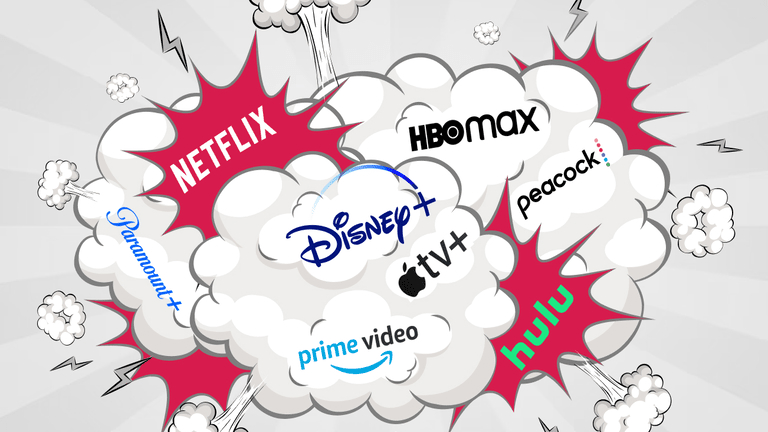The media & entertainment industry is undergoing a significant transformation driven by the rise of streaming services. Traditional TV packages are declining due to their high prices and bundles of channels that many people don’t watch. In their place, many streaming services offer consumers a la carte content at a lower cost.
This shift in the market is forcing media companies to rethink their distribution models and partnership strategies. To survive and thrive in the streaming era, they need to find ways to deliver their content to consumers in a way that is both convenient and affordable.
One trend is the rise of hybrid distribution models. This involves offering content through a combination of traditional and streaming channels. For example, a media company might make its content available on a streaming service and sell it to cable or satellite TV providers. This gives consumers more choice and flexibility in watching their favorite shows and movies.
Another trend is the growth of partnerships between media companies and technology giants. These partnerships can help media companies reach a wider audience and reduce costs. For example, Netflix has partnered with Microsoft to deliver its content to users via the Microsoft Cloud. This partnership will help Netflix scale its operations and improve its streaming service’s quality. Similarly, ESPN is in talks with other tech giants like Amazon and Apple as The Walt Disney Co. continues to search for a strategic partner for its sports streaming channels.
The future of the media and entertainment industry is uncertain, but one thing is sure: distribution models and partnership strategies will continue to evolve. As the industry adapts to the changing landscape, consumers will have more choices and control over their media consumption.

Distribution and Partnership Models in the Future of Media and OTT
Warner Bros. Discovery and Amazon partnered to make HBO Max available on Amazon Prime Video Channels. This partnership exemplifies media companies partnering with tech giants to reach a wider audience, reduce costs, and consolidate the streaming industry.
Here are some specific predictions about how distribution models and partnership strategies in the Media and OTT space will evolve in the future:
Consolidation of streaming services
The current market is overcrowded, with too many streaming services competing for a limited number of subscribers. This is driving up content costs and making it difficult for streaming services to profit. Some platforms merged or formed partnerships to counter this, bundling their services to offer subscribers more value.
- in 2021, Warner Media and Discovery merged to create Warner Bros. Discovery. This merger created a streaming giant with a vast content library, including HBO Max, Discovery+, and CNN+.
- in 2022, Comcast acquired Sky, a European pay-tv giant. This acquisition gave Comcast access to Sky’s streaming service, NOW TV, and a large customer base.
- in 2022, Sony Pictures Entertainment acquired Crunchyroll, a popular anime streaming service. This acquisition gave Sony a significant foothold in the anime streaming market.
- in 2022, Paramount Global acquired Pluto TV, a free streaming service with over 70 million active users. This acquisition allowed Paramount to reach a wider audience with its content.
In the future, we will likely see consolidation in the market, with the weaker streaming services being acquired or shutting down.
Content costs will become more reasonable
As the market consolidates, content costs will likely come down. Fewer streaming services will compete for the same content, driving down prices.
- New technologies, such as artificial intelligence and machine learning, will also be leveraged heavily to reduce the cost of producing content. For example, AI could automate editing and color grading tasks, freeing human resources to focus on more creative aspects of production.
- Developing new business models could also help reduce content costs. For example, some streaming services are experimenting with subscription models that allow users to pay for only the content they watch. This could lower prices for consumers who only manage a small amount of content.
This will make streaming services’ profit easier and offer consumers more competitive pricing.
Technology platforms will become more cost-efficient
The cost of streaming technology is also coming down. This will allow streaming services to offer a better user experience without increasing prices. This will be enabled through:
- Use of AI/ML – Artificial intelligence will automate tasks like transcoding and content recommendations. This can help to reduce costs, as streaming services do not need to hire as many employees to perform these tasks. Machine learning could be used to improve the efficiency of streaming services. For example, machine learning can predict which content users are most likely to watch, which can help reduce bandwidth costs.
- Use of open-source software – With many source-free software getting churned out in the market, they are doing as well as any paid software, especially in the video editing space, and can be modified to meet the specific needs of streaming services. This can help to reduce costs, as streaming services do not need to develop their software.
- Use of data analytics – Data analytics will be used to understand user behavior and preferences in a much more effective way. This information will be used to improve the content selection and recommendations of streaming services, which can help to attract and retain subscribers.
These emerging technologies like AI/ML, open-source software, and data analytics are reducing streaming costs and improving user experiences.
In addition to the trends mentioned above, a few other factors could shape the future of distribution and partnership models in the Media and OTT space. These include:
- Growth of international markets: Streaming services are becoming increasingly popular in international markets. This presents new opportunities for media companies and technology giants to partner and deliver content to a global audience.
- Rise of new technologies: Developing new technologies, such as virtual and augmented reality, could open new possibilities for delivering media content.
- Changing habits of consumers: The way that consumers watch media is constantly evolving. Streaming services must be flexible and adaptable to keep up with these changes.
The trends discussed above will have a significant impact on consumers. Consolidating streaming services could lead to higher prices, but it could also lead to more comprehensive offerings and better user experiences. The rise of new technologies could open up new ways for consumers to watch their favorite content, and changing habits of consumers could lead to new subscription models and pricing options.
The Future of Streaming: Consolidation, Partnerships, and Content
The streaming wars are consolidating and collaborating, with major players partnering to create more comprehensive offerings. Industry analysts believe consumers are now less willing to subscribe to multiple services, leading to a more sustainable model for the streaming ecosystem. Platforms are focusing on retaining existing subscribers through a focus on content.
While the streaming wars may not be over, there is a growing sense of resolution and stability in the industry. Consolidation, partnerships, and a focus on content have created a more sustainable streaming landscape. Viewers can expect continued competition and innovation, but the era of cutthroat battles for dominance gives way to a more balanced and content-driven future for streaming services.
The future of distribution and partnership models in the Media and OTT space is uncertain, but the industry is transforming significantly. The industry is adapting to the changing landscape and finding ways to deliver content to consumers conveniently and affordably. This is good news for consumers, who will have more choice and control over their media consumption. The trends and factors discussed above will all play a role in shaping the future of this dynamic industry.





